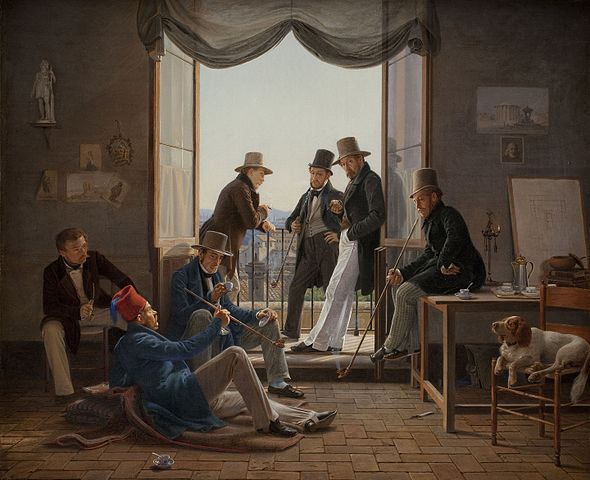Destroying the Frick, a History of Theatre Fires, and the Democratic Cigarette

Let’s start this morning off with a canceled bit of culture we all can support: Naomi Wolf’s publisher drops Outrages: “Houghton had delayed a planned June release of Outrages after questions emerged over the scholarship of the book, which centers on the treatment of gays in Victorian England. Houghton initially planned to publish Outrages as scheduled, but soon changed its mind, announcing that ‘new questions have arisen.’”
In other news: Californian law aimed at “cracking down” on Uber and Lyft (what are they, drug lords?) could hurt freelancers, too: “If a freelance journalist writes for a magazine, newspaper or other entity whose central mission is to disseminate the news, the law says, that journalist is capped at writing 35 ‘submissions’ per year per ‘putative employer.’ At a time when paid freelance stories can be written for a low end of $25 and high end of $1 per word, some meet that cap in a month just to make ends meet. Amy Lamare, who writes for money site Celebritynetworth.com and YourTango.com, adds, ‘Everyone’s freaking out, like my anxiety is going through the damn roof.’”
A short history of theatre fires: “William Paul Gerhard, an engineer with the British Fire Prevention Committee, stated in a report that by May 1897 there had been 1,115 recorded theater fires in Europe and America (since records had been kept); there were 460 theater fires across America and Europe just from 1800 to 1877. Gerhard claimed that the average life of a theater in the United States was only about thirteen years due to fire.”
The democratic cigarette: “The best smoking bars, operating legitimately or illegitimately, have the ability to bring together classes who would otherwise never have reason to socialize. The third-best smoking bar was the 34 Club in St. Louis, a place I stumbled upon while waiting for a ride to the airport. It was a neighborhood dive located in a gentrifying area of the city; it operated without the threat of raid hanging over its head. I entered at 4 p.m. and stayed an hour, puffing away with some union laborers, a male hairstylist and a Republican staffer on the same stools and booths used by Stan Musial, Dean Martin and Miles Davis. No one talked shop. Five beers cost $15 with the tip. The 34 Club is no more. The city traded in the neighborhood dive founded in 1941 for ‘71 boutique residential flats’ and a Shake Shack, which will go great with the new Whole Foods down the block. Using a program designed to boost ‘blighted’ areas, the city awarded developers $6 million in financing to tear down the landmark.”
Hockey season has started. Seventy years ago Frank Zamboni transformed the sport with his ice clearing machine.
Essay of the Day:
In City Journal, Catesby Leigh argues that plans to change the Frick “will cause considerable harm to the finest house museum in the United States”:
“As part of an expansion of its facilities, which include the 11-floor Frick Art Reference Library building in the northeast corner of its property, the Frick proposes to do away with its Music Room, a fine circular chamber that opens off the building’s Garden Court. Both the room and the court were designed by John Russell Pope in the 1930s. The Frick also proposes to gut the Reception Hall designed by John Barrington Bayley four decades later and to surmount Bayley’s beautiful pavilion housing the hall with a low and recessed—but thoroughly inappropriate—window wall. A new raised roof will make space for a second story on top of the pavilion, where a museum shop will be located, while Pope’s Music Room will be replaced by a special exhibition gallery, rectangular in plan. ‘Stripped classical’ doesn’t do justice to the proposed gallery and new reception hall, which will also replace the Bayley pavilion’s bookshop, lodged behind the existing hall. ‘Anorexic classical’ is more like it. With their dull, blank white walls, these spaces will be as cold as ice, and utterly discordant with the Frick’s architectural character.
“The plans have some positive aspects. It will be wonderful for visitors to climb the original mansion’s grand staircase to the second floor, where Pope converted family quarters into museum offices. These will now be used for the exhibition of small paintings, drawings, and works of decorative art. And the Frick has long emphasized its need for a larger auditorium, better conservation facilities, and better accommodations for school groups. But to degrade the existing house museum would be a terrible mistake.”
Photo: Rapeseed field
Receive Prufrock in your inbox every weekday morning. Subscribe here.